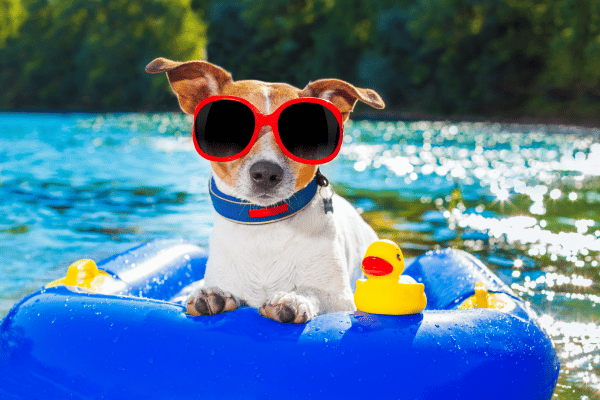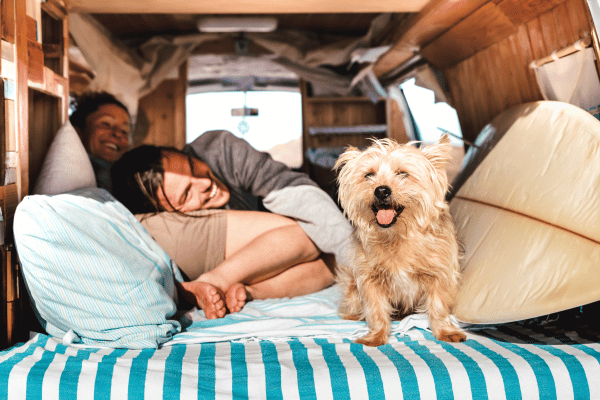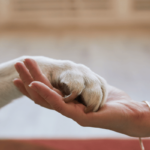Traveling with pets can be a delightful experience, yet it demands careful planning. In this ultimate guide, well explore essential Safe Pet Travel Essentials Tips. Whether youre embarking on a long journey or a quick getaway, these insights will ensure your furry friends enjoy a safe and comfortable adventure. Lets dive into the world of pet-friendly travel together.
Maximizing Comfort During Pet Travel Adventures

Preparing for a trip with your pet starts with choosing the right carrier. Its crucial for their safety and comfort. Look for a spacious, well-ventilated carrier that allows your pet to move and rest comfortably. Additionally, familiarize your pet with the carrier before the journey. This reduces stress, making the travel experience more pleasant for both of you. Remember, a relaxed pet is a happy traveler.
Next, consider your pets health and well-being. Before embarking on any journey, a visit to the vet is advisable. Ensure your pet is up-to-date with vaccinations and check if any specific health precautions are needed for your destination. Also, pack a pet first-aid kit. Include items like bandages, antiseptic wipes, and any prescribed medications. These Safe Pet Travel Essentials Tips are vital for handling unexpected situations.
Lastly, plan your travel route and breaks. Pets need regular stops for exercise and bathroom breaks. Look for pet-friendly rest stops and parks along your route. Also, keep your pet hydrated and avoid feeding them right before traveling to prevent motion sickness. With these Safe Pet Travel Essentials Tips, youre set for a memorable journey. Remember, the key to successful pet travel is preparation and patience.
Ensuring Pet Safety on Long Road Trips
When embarking on long road trips, its essential to keep your pet secure. A harness or a pet seatbelt is a must for dogs, while cats should remain in their carriers. This not only protects your pet in case of sudden stops but also prevents them from distracting the driver. Additionally, never leave your pet alone in a parked vehicle, as temperatures can rise quickly, posing a serious risk to their health.
Adjusting your pet to the travel environment is also crucial. Start with short drives to get them used to the motion of the vehicle. Gradually increase the duration of these trips. This helps in reducing anxiety and motion sickness. Also, bring along their favorite toy or blanket for comfort. Familiar scents can have a calming effect, making the travel experience less stressful for your furry companion.
Finally, consider your pets dietary needs while traveling. Stick to their regular feeding schedule as much as possible and avoid giving them unfamiliar foods. Bring enough of their regular food, treats, and water from home. Sudden changes in diet can cause digestive issues. Also, ensure they have access to clean water throughout the journey. Staying hydrated is crucial, especially during long trips, to keep your pet healthy and comfortable.
Safe Pet Travel Tips for Air Journeys
Air travel with pets requires extra planning. Firstly, check the airlines pet policies, as they vary significantly. Some allow pets in the cabin, while others may require them to travel in the cargo hold. Its crucial to ensure your pets carrier meets the airlines specifications. Also, acclimate your pet to the carrier well before the trip. This preparation is key to reducing their stress during the flight.
Before flying, visit your vet to discuss any concerns about air travel, especially for brachycephalic breeds like pugs or Persian cats, who may have breathing difficulties. Your vet might suggest specific precautions or advise against air travel for these pets. Additionally, update all vaccinations and ensure your pet has proper identification, including a microchip and tags with your contact information. These steps are vital for Safe Pet Travel Essentials Tips.
On the day of the flight, feed your pet a light meal a few hours before departure to prevent nausea. Avoid feeding during the flight to reduce discomfort. Also, exercise your pet before heading to the airport to help them relax. Remember, the key to successful air travel with pets is thorough preparation and understanding their needs. With these Safe Pet Travel Tips, you can ensure a smoother and safer journey for your beloved companion.
Navigating Pet-Friendly Accommodations with Ease
Finding pet-friendly accommodations is a crucial aspect of travel planning. Research in advance to find hotels or rentals that welcome pets. Look for places offering amenities like pet beds, bowls, or a designated play area. This preparation ensures comfort for both you and your pet. Also, inquire about any additional fees or restrictions, like size or breed limitations. Staying informed helps avoid any surprises and contributes to a pleasant stay.
Upon arrival, help your pet acclimate to the new environment. Bring along familiar items from home, such as their bed or toys. This familiarity can significantly reduce their anxiety. Also, take time to explore the area with your pet, allowing them to get comfortable with their new surroundings. Remember, some pets may take longer to adjust, so patience is key. Ensuring their comfort is essential for a successful and enjoyable stay.
Lastly, be a responsible pet owner during your stay. Adhere to the accommodations pet policies, keep your pet on a leash in public areas, and clean up after them. Consider crate training your pet for times when you need to leave them alone in the room. This not only keeps them safe but also prevents any potential damage. Responsible pet ownership ensures a positive experience for everyone involved and promotes pet-friendly policies.
Essential Tips for International Pet Travel

International travel with pets requires thorough preparation. Start by researching the pet import regulations of your destination country. Requirements can include specific vaccinations, health certificates, and even quarantine periods. Its crucial to understand and comply with these regulations to ensure a smooth journey. Additionally, consult with your vet about any health concerns and necessary precautions for international travel. Proper preparation is key to avoiding complications upon arrival in a new country.
Consider the climate and environment of your destination. If traveling to a drastically different climate, your pet may need time to acclimate. For instance, pets used to cooler climates may struggle in tropical destinations. Take measures to ensure their comfort, such as providing adequate hydration and shade. Also, be aware of any potential environmental hazards, like local wildlife or plants, that could pose risks to your pets health and safety.
Lastly, think about the emotional well-being of your pet. Long international journeys can be stressful. To help ease their anxiety, maintain a calm demeanor and provide reassurance throughout the trip. Familiar items like blankets or toys can also offer comfort. Upon arrival, give your pet time to adjust to the new surroundings. With patience and care, your pet can successfully adapt to the new environment, making your international adventure enjoyable for both of you.
Planning Road Trips with Pets Effectively
Effective planning is crucial for enjoyable road trips with pets. Start by mapping out your route, considering pet-friendly stops for rest, exercise, and bathroom breaks. This planning not only keeps your pet comfortable but also helps manage their energy levels. Additionally, identify veterinary clinics along your route. Knowing the locations of nearby vets provides peace of mind and ensures quick access to professional help in case of emergencies during your journey.
Packing for your pet is as important as for yourself. Create a checklist including food, water, bowls, leash, waste bags, grooming supplies, and any medications. Dont forget their favorite toys and a comfortable bed or blanket for the car. These items provide a sense of security and comfort for your pet in a changing environment. Also, consider a pet travel kit with essential items easily accessible during the trip.
Lastly, ensure your pet is comfortable and safe in the vehicle. Use a well-ventilated crate or a pet seatbelt harness for their security. Never allow pets to roam freely in the car as its unsafe and can be distracting. Breaks should be frequent, allowing your pet to stretch and relieve themselves. With thoughtful planning and consideration of your pets needs, road trips can be a fun and stress-free experience for both of you.
Creating a Relaxing Journey for Your Pet
Creating a relaxing journey for your pet is essential for a successful trip. Start by maintaining a calm atmosphere. Pets often pick up on their owners emotions, so staying relaxed can help soothe their anxiety. Use calming pheromones or a familiar blanket to create a comforting environment in the car or carrier. These small steps can significantly reduce stress, making the travel experience more enjoyable for both you and your pet.
During the journey, regularly interact with your pet. Gentle petting or talking in a soothing voice can provide reassurance. If your pet is prone to anxiety or motion sickness, consult your vet about appropriate remedies or treatments before the trip. Additionally, ensure that the temperature in the vehicle is comfortable, avoiding extremes of hot or cold. Proper ventilation is also crucial, especially during longer trips, to keep your pet comfortable and safe.
Lastly, be mindful of your pets routine. Try to stick to their regular feeding and bathroom schedule as much as possible. This consistency helps minimize disruption and stress. Also, allow for regular breaks on longer journeys, giving your pet a chance to stretch, exercise, and relieve themselves. By considering your pets physical and emotional needs, you can create a relaxing and enjoyable travel experience for them.
Safe Pet Travel Essentials Tips for City Explorations
Exploring a city with your pet can be exciting, but it requires careful planning. Always keep your pet on a leash in urban areas for their safety and the safety of others. Busy streets can be overwhelming, so its important to gradually acclimate your pet to crowded environments. Start with quieter areas and gradually move to busier ones. This approach helps your pet adjust without feeling stressed or anxious.
Research pet-friendly locations in the city, such as parks, cafes, and stores. This preparation ensures you and your pet can enjoy the exploration together. Always carry water and a bowl, as city adventures can be tiring, and pets need to stay hydrated. Also, be aware of the citys regulations regarding pets, including leash laws and waste disposal rules. Following these guidelines is part of being a responsible pet owner.
Lastly, be considerate of others. Not everyone is comfortable around pets, so keep your pet close and under control. Also, be prepared for any waste cleanup. Carrying waste bags is essential and shows respect for the city and its residents. By following these Safe Pet Travel Essentials Tips, you can ensure a pleasant and respectful experience for everyone involved, making your city explorations with your pet enjoyable and stress-free.
Ensuring Pet Health During Travel Adventures
Ensuring your pets health during travel is paramount. Always carry a copy of their medical records and a health certificate, especially when crossing state or international borders. This documentation is often required and can be crucial in emergencies. Also, be aware of the signs of stress or illness in pets, such as excessive panting, drooling, or lethargy. Quick recognition of these signs allows for prompt action, ensuring your pets well-being.
Consider the specific health needs of your pet. If they have chronic conditions, ensure you have an adequate supply of their medication. Also, be prepared for the possibility of motion sickness. Your vet can recommend medications to alleviate this. Additionally, keep your pets vaccinations up to date. This is not only a health requirement for many destinations but also provides protection against various diseases they might encounter during travel.
Lastly, think about preventive care. Depending on your destination, your pet may need additional vaccinations, flea, tick, and heartworm prevention. Consult your vet to determine whats necessary. Also, always have a first-aid kit handy. Include items like bandages, antiseptics, tweezers, and a thermometer. Being prepared for minor injuries or illnesses can make a significant difference in managing your pets health and ensuring a safe and enjoyable travel experience.
Balancing Fun and Safety on Pet Trips
Balancing fun and safety is key to successful pet trips. Always prioritize your pets safety, but dont forget to make the journey enjoyable. Incorporate playtime and exploration into your travel plans. This balance keeps your pet engaged and happy. Choose destinations with pet-friendly activities, like hiking trails or dog parks. These environments allow your pet to expend energy and experience new sights and smells, contributing to a memorable and stimulating trip.
During the trip, monitor your pets behavior and comfort level. If they seem overwhelmed or anxious, take a break and provide reassurance. Understanding your pets limits and signs of stress is crucial for a positive experience. Also, ensure they have opportunities to rest. Just like humans, pets need downtime to relax and recharge, especially after a day full of activities. Providing a quiet and comfortable space for rest is essential.
Lastly, remember to capture the moments. Taking photos or videos of your pet enjoying the trip creates lasting memories. However, ensure that this doesnt interfere with their safety or enjoyment. Always respect your pets space and comfort level with the camera. By balancing fun activities with safety and relaxation, you can create an enriching travel experience for your pet, making each trip an adventure to look forward to.
Conclusion
In conclusion, traveling with pets can be a deeply rewarding experience that strengthens the bond between you and your furry companion. By following these Safe Pet Travel Essentials Tips, you can ensure that every journey is as stress-free and enjoyable as possible. Preparation, understanding your pets needs, and staying flexible are key. Each trip is an opportunity to create unforgettable memories while ensuring the safety and happiness of your beloved pet.
Remember, the essence of pet travel is not just about reaching a destination but also enjoying the journey together. Adapting to different situations, whether its a car ride, a stay in a new place, or exploring unfamiliar territories, contributes to your pets socialization and well-being. These experiences can enrich your pets life, providing mental stimulation and physical exercise, essential components of a healthy and fulfilled pet lifestyle.
Lastly, always prioritize your pets comfort and safety. Their well-being is paramount, and every decision should reflect this. With careful planning and a heart full of love for your animal companion, every trip can be a wonderful adventure. Embrace these Safe Pet Travel Tips and embark on many more joyful and safe journeys with your pet. Happy travels!
II. Dog and Cat Care FAQs
- Do dogs and cats care if we are naked?Dogs and cats generally do not have the same social norms and perceptions about clothing as humans do. They respond more to the scent, behavior, and body language of their owners rather than their state of dress or undress.
- Do cats and dogs worry about their babies?Cats and dogs exhibit parental instincts and can show concern for the well-being of their offspring. This includes providing food, protection, and teaching survival skills, although the intensity and duration of these behaviors can vary widely among individuals and breeds.
- Do dogs and cats understand that they are moving in cars?Dogs and cats can perceive motion and changes in their environment, so they do understand on some level that they are moving when in cars. Their reactions to car rides can vary, with some enjoying the experience and others feeling anxious or sick.
- How do dogs and cats view car rides?Dogs and cats can have varied perceptions of car rides. Some dogs may find car rides exciting and associate them with positive experiences like going to the park. Cats might be more prone to stress in moving vehicles, often preferring stable and familiar environments.
- How is caring for dogs and cats different?Caring for dogs often involves more active engagement, including regular walks, socialization, and training. Cats typically require less direct interaction but need environmental enrichment, such as climbing structures and scratching posts. Dogs may thrive on routine and structure, while cats often prefer a more independent lifestyle.
- What is the difference in caring for a dog and a cat?The main difference lies in their needs for social interaction and exercise. Dogs generally require more time and effort in training, exercise, and social activities, while cats are more independent, needing less direct interaction but appropriate environmental enrichment.
- Is there a specific veterinarian for dogs and another for cats?While many veterinarians treat both dogs and cats, there are specialists known as feline veterinarians who focus exclusively on cat care. These specialists have in-depth knowledge of feline medicine and behavior.
- Can cats take care of themselves?Cats are known for their independence but still require human care for food, health, and safety. While they can perform basic grooming and hunting behaviors, domestic cats rely on their owners for their well-being.
- How long does it take for the mother of the puppy and cat to forget that they are her children?The maternal bond in dogs and cats can diminish over time, especially after weaning, which typically occurs around 6 to 8 weeks of age. However, the exact time it takes for a mother to "forget" her offspring can vary and is not well-documented.
- At how many months do dogs and cats stop breastfeeding their puppies?Dogs and cats usually wean their offspring around 6 to 8 weeks of age. This process can vary depending on the individual animal and circumstances.
- What is the care of a puppy and the difference between that of a cat?Puppies require consistent training, socialization, and more frequent feeding schedules. Cats, particularly kittens, need less socialization but require safe environments to explore and engage in natural behaviors like climbing and scratching.

Join Dan Morgan at dwfocus.com, your hub for ‘4 paws and owners’ wisdom! Explore a world where pet care meets expert insights, crafted by Dan, a seasoned vet with a heart for animals. Engage with stories, tips, and advice that every pet owner needs. From playful pups to graceful cats, Dan Morgan guides you through the joys and challenges of pet parenting. Embrace your love for pets with Dan’s expert guidance on dwfocus.com. #4PawsAndOwners #DanMorganPetExpert #dwfocus







